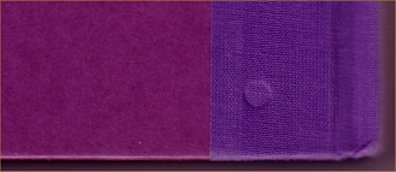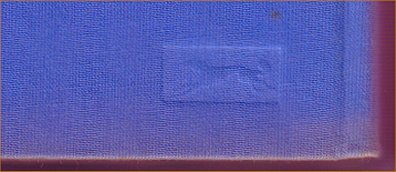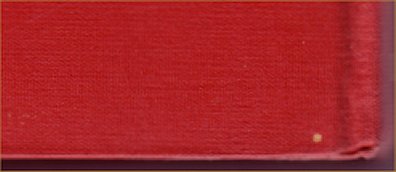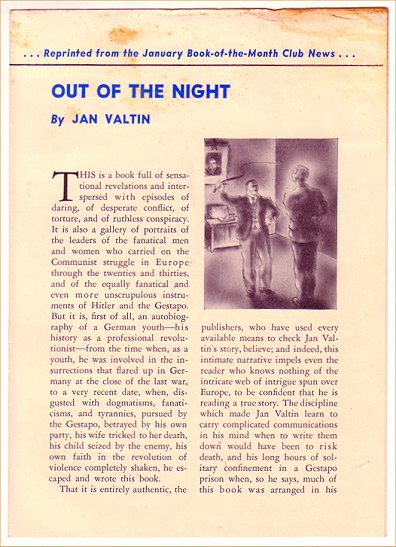

|
Estimates differ, but many hundreds of book clubs have come and gone over the past 70 or 80 years, with a total number perhaps approaching a thousand. Many flourish today. Undoubtedly, the best known of these is the Book-of-the-Month Club. Founded by advertising copywriter Harry Scherman in 1926, BOMC grew to a million members by the end of the 20th century. Another major player (whose sales numbers have in fact consistently and comfortably exceeded the BOMC's) was and remains Doubleday, which began operations in 1927 and grew a family tree of well over a dozen distinct clubs, among them Doubleday Book Club and the Literary Guild. Both of these publishers have used a variety of methods over the years to designate their BCE's. Because we're more likely to encounter examples published by these two than all others combined, we'll discuss their methods in detail, offer some general observations on other book clubs, and attempt to organize things into a useful tool for identification.
The BCE MythBefore we start, let's dispel a prevalent myth: book club editions have no value. Though this may be largely true, there are so many exceptions to this that you're more than justified in taking a second look at any BCE that passes through your hands. First, some BCE's are in fact the first appearance (sometimes the only appearance) of a title in print - that is, the actual first edition, first printing, first you-name-it. Though not common, coming across this exception can make your day. Example: the First Edition Society of the Franklin Library has produced a number of these titles. Second, some BCE's are the first appearance of a book in hardback form - a common occurrence in the Science Fiction and Mystery genres. Though not first editions, these are sometimes marginally collectible notwithstanding. Also, and more often, they may be in demand as reading copies because collectible paperbacks, for obvious reasons, are rarely handled for any purpose, least of all reading. (EDITOR'S NOTE: for a detailed discussion of Science Fiction BCE's see Tim Doyle's article in this issue.) Third, some BCE's command relatively strong prices (a trickle-down phenomenon) if their trade edition counterparts are intensely collectible. J.D. Salinger's Catcher in the Rye stands as a shining example. Fourth, some BCE's, especially vintage titles in dust jackets by collectible authors, are desirable simply on the basis of their own scarcity. Collectors of P.G. Wodehouse, for example, often have difficulty locating, let alone affording, first trade editions in dust jackets on titles predating 1940. They will, however, sometimes slake their thirst by purchasing early BCE's or reprints in what are fast becoming relatively scarce dust jackets. Fifth, Reader's Digest Condensed Books are nearly always roundly rejected by booksellers, but believe it or not, very early examples of these have become moderately collectible, especially if dust jackets are present. Finally, some book clubs produce richly upgraded, limited editions which are collectible in their own right, and prices for these sometimes exceed prices for the corresponding first trade editions. Easton Press, Limited Editions Club, Franklin Library, Book Club of California - all examples.
Identifying Book-of-the-Month Club EditionsRecords are made to be broken, but the same could also be said for rules that apply to books. Even in the narrowly defined area of book club identification, exceptions seem to pop up at every turn. Still, if there's one rule that's been consistently touted as universal, it's BOMC's infamous blind stamp - a small indentation or debossing (often incorrectly termed embossing), approximately 1/8" across, appearing on the back board in the lower corner next to the spine. Over the years it's been variously shaped as a circle, square, etc., but if it's there at all, you can be certain you have a BCE.

Well, almost. There have been occasions when books have been printed in quantities that exceeded the capacity of one house to produce, and blind stamps were used - fortunately this practice was not at all common - to distinguish productions of the additional printing houses who participated. These are decidedly not BCE's. Several James Michener titles (The Covenant, Poland, et al) are notable examples. By the way, care should be taken not to confuse a publisher's blind-stamped logo or ISBN number with BCE blind stamps. Knopf's familiar Borzoi dog logo appears below.

Another relatively common designation in the early years was a gilt-stamped "Book-of-the-Month Club Selection" on the spine. I've not seen this on any BOMC editions later than 1927, but of course, when it's there, it confirms BCE status. There are further complications. BOMC began the practice of blind stamping in the late 1920s and discontinued it in recent years. Beginning in the late 1930s, however, some BOMC publications were marked by geometric forms printed (not blind stamped) on the board cloth.

Also, blind stamping can often take the form of what looks like a tiny puncture made with an awl. But some BOMCs had no such markings. Very recent examples are unmarked as well, and in both cases additional indications must be investigated. Example: A laid-in BOMC review slip or brochure may be present.

< to previous article
to next article >
Questions or comments?
| Forum
| Store
| Publications
| BookLinks
| BookSearch
| BookTopics
| Archives
| Advertise
| AboutUs
| ContactUs
| Search Site
| Site Map
| Google Site Map
Store - Specials
| BookHunt
| BookShelf
| Gold Edition & BookThink's Quarterly Market Report
| DomainsForSale
| BookThinker newsletter - free
Copyright 2003-2011 by BookThink LLC
|

|